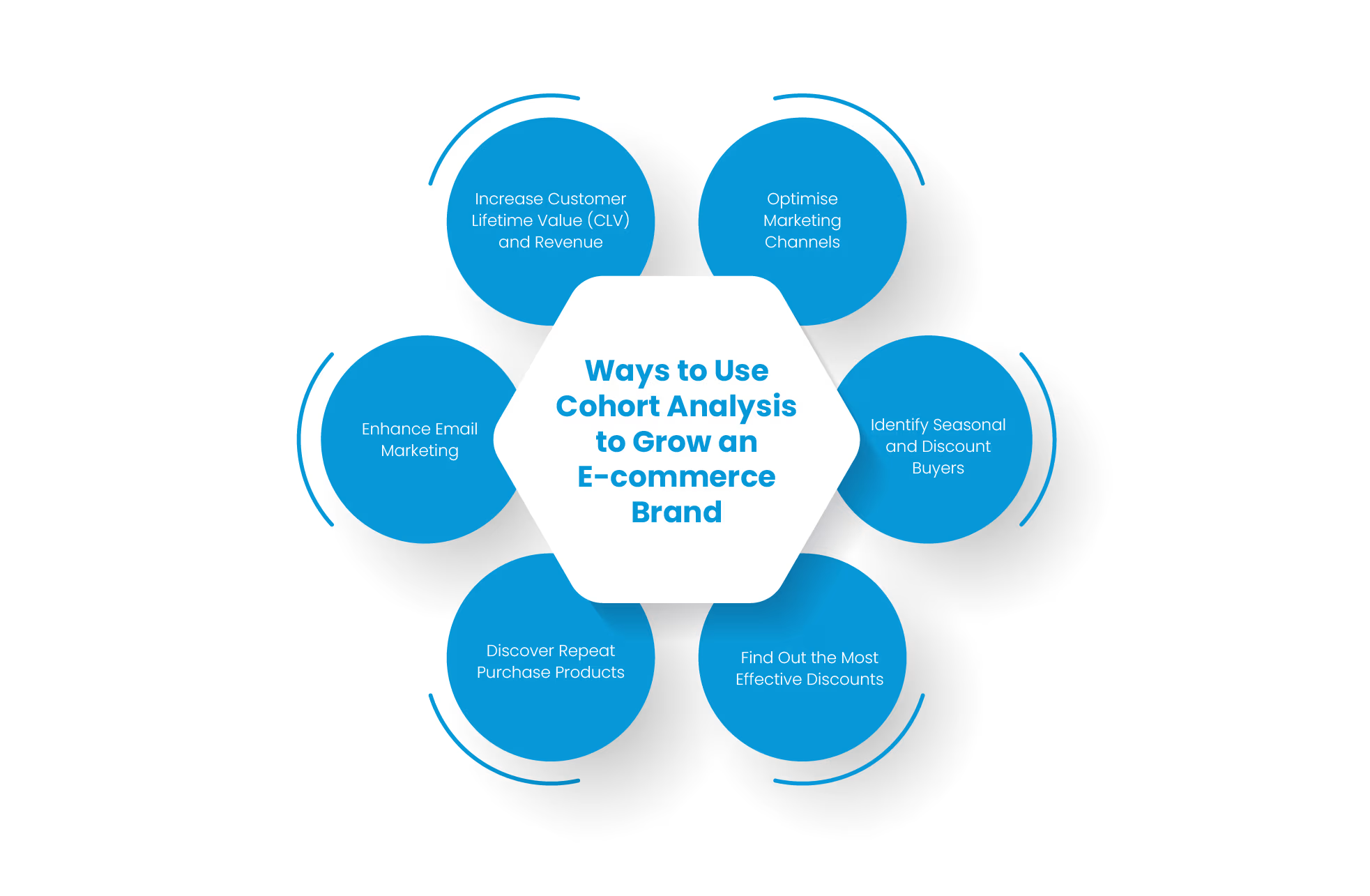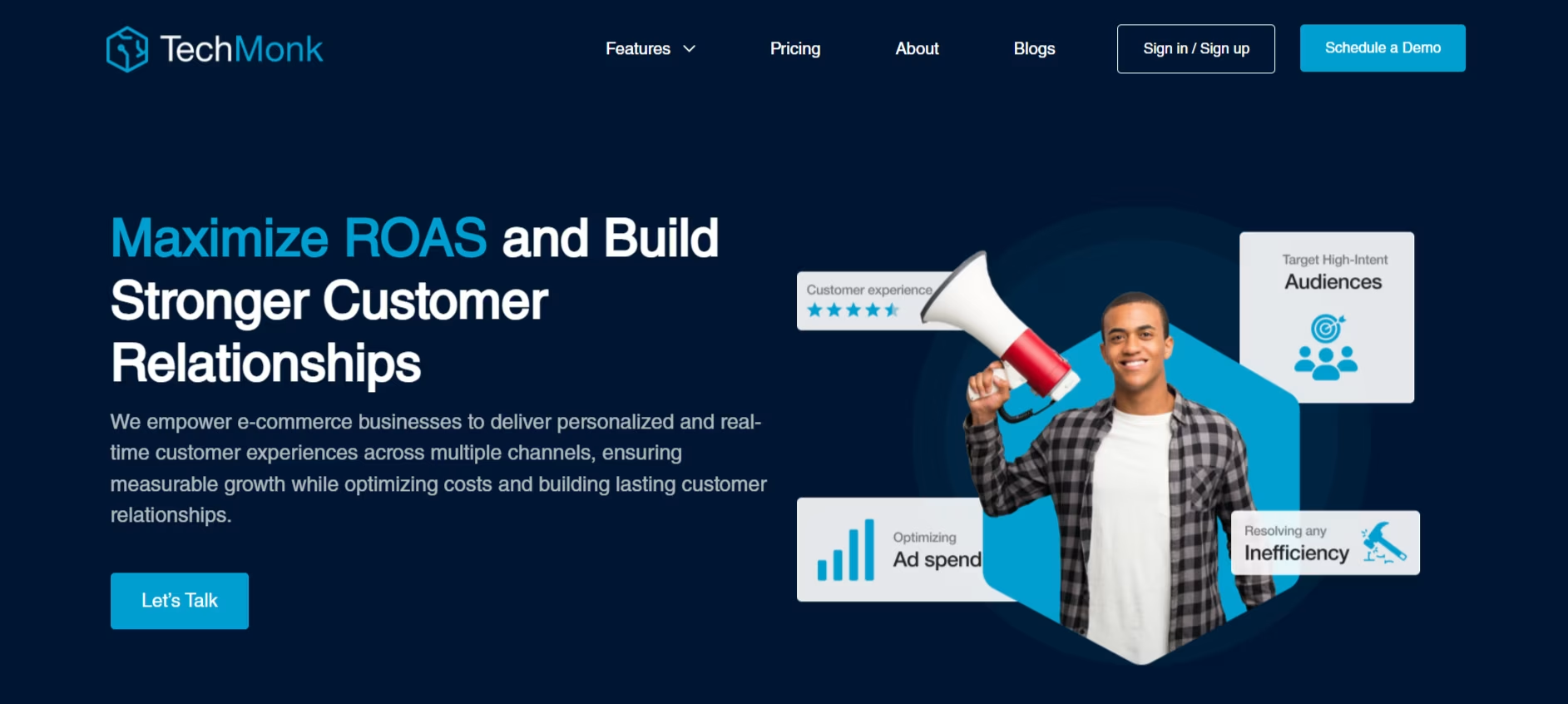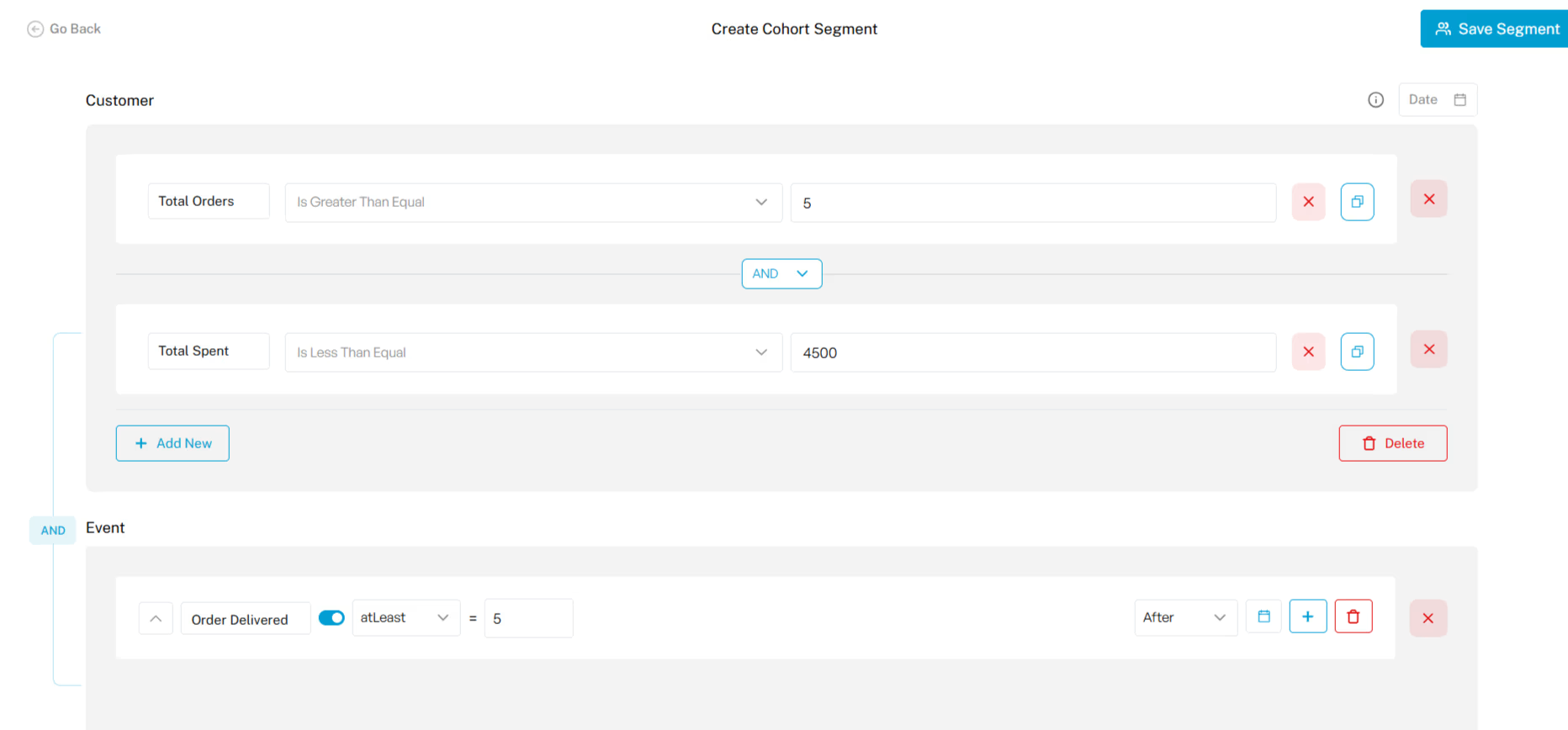TLDR: Cohort Analysis in E-commerce
- Cohort Analysis Basics: It groups customers by shared traits or actions to study their behaviour over time.
- Why It Matters: Helps predict CLV, spot churn reasons, personalise marketing, manage inventory, and plan budgets more effectively.
- Practical Uses: Boost lifetime value, optimise channels, identify seasonal buyers, test discounts, track repeat products, and refine email campaigns.
Did you know that 71% of consumers feel frustrated when a shopping experience is impersonal? That means most of your customers expect more than just discounts or quick checkouts. They want shopping to feel tailored to their needs.
So, here’s the big question: are your current engagement strategies meeting those expectations? If not, you’re in the right place. In this article, we’ll explore how cohort analysis can give e-commerce brands a clear understanding of customer behaviour. By grouping customers based on shared actions or traits, you can uncover trends, reduce churn, and build stronger loyalty.
Let’s dive in and see why cohort analysis is the key to smarter engagement and retention.
What is Cohort Analysis?
Cohort analysis is a market analysis in which customers are classified according to similar characteristics or events during a certain time. These groups, or cohorts, create the possibility to study certain segments of users and their behaviour within business over a given period of time.
For example, you could create a group of customers who, for the first time, made a purchase in January and then observe their subsequent purchases. The output of this analysis gives a better vision of each customer segment in terms of customer retention, engagement, and lifetime value.
What is Cohort Analysis in E-commerce?
Cohort analysis can be used by e-commerce brands to identify those customers who are the most likely to return, the promoting campaigns attracting the highest value customers, and the product categories that can generate the most repeat sales. Such granularity is incredibly useful when it comes to making business about the inventory and the money spent on personalised marketing and customer retention.
This analysis is particularly powerful in e-commerce as a whole. When comparing one group to another throughout the year, companies have insight into which efforts to maintain, change, or abandon in regards to customer relations.
TechMonk: The Best Cohort Analysis Tool For E-Commerce
Why is Cohort Analysis Important?
Cohort analysis offers multiple benefits for e-commerce businesses, including:
1. Accurate Customer Lifetime Value (CLV) Predictions: Cohort analysis allows for proper quantification of the CLV of the differentiated customer groups.
Thus, brands know which cohorts are the most valuable over time and make exact sales predictions and shift their acquisition strategies to target high LTV customers.
2. Pinpointing Churn Reasons: Cohort analysis also enables e-commerce brands to determine when and why customers lose interest or stop buying. If these areas were resolved earlier, they would reduce churn rates, hence the term 'churn points' or 'churn factors.'
By evaluating these change points, it is possible to undo them using either product changes, customer care services, or reinvention campaigns.
3. Data-Driven Personalisation: Businesses can develop accurate marketing niche segmentation to market to individual customer cohorts.
This could mean giving customers coupons, sending them specific emails, or simply recommending something to them, thus making customers feel wanted and more likely to buy again.
4. Enhanced Inventory and Supply Chain Management: Seasonality plays a critical role in consumers’ purchases, and it is essential to know which products or categories several cohorts prefer over others.
As a result, businesses can tackle purchase frequency imbalances to prevent overstocking and stockout situations. This helps in ensuring that stock is available when needed most, and also helps in minimizing operating cost hence effectively satisfying the users.
5. Efficient Budget Allocation Across Channels: By knowing how well the various groups do in different acquisition approaches, the e-commerce brands can properly distribute budgets.
For instance, one of the client groups may record good results from social media campaigns, another from email marketing, thus efficiency of the resources used can be adjusted for the best ROI.
6. Supporting Long-Term Strategic Planning: Even based on the results of a single year’s cohort analysis, there are elements that can be important for the preparation of long-term work.
In other words, if a brand can monitor how the customer uses the brand, then they can guess how the demand will change, when to change the prices, how to plan for marketing their products and how to cultivate customer loyalty programs according to customer expectations.
Ways to Use Cohort Analysis to Grow an E-commerce Brand
1. Increase Customer Lifetime Value (CLV) and Revenue
Customer Cohorts demonstrates which groups consistently provide the most value in purchasing patterns. Knowing the factors that cause consumers to continue buying, e-commerce brands can design actions to improve CLV and make consumers’ growing contributions to the business.

2. Optimise Marketing Channels
Cohort analysis can also indicate the marketing channels that attract valuable customers. For example, if the campaign increases user engagement in the long term among some category of users, brands may spend more money in the same channel in future campaigns.
3. Identify Seasonal and Discount Buyers
E-commerce sales vary at some point in the season or during promotions. Cohort analysis is done according to the purchase time, and it helps brands understand some buyers who buy products at a particular time of the year or some buyers who look forward to discounts.
4. Find Out the Most Effective Discounts
While offers affect the sales in a big way, not all customers are moved by offers/sales. Through the cohort analysis of the buying behaviours, marketers can identify which groups are most sensitive to certain discount levels in an endeavour to optimise the conversion rates for the brands.
5. Discover Repeat Purchase Products
Cohort analysis identifies which of the products are frequent in the market. With such products identified, brands can focus more in their marketing, stocking as well as recommendations in a bid to ensure customers come through the door again.
6. Enhance Email Marketing
Cohort analysis can help e-commerce brands make particular changes to their email marketing. For instance, if a specific cohort of customers is receptive to calls for specific products, brands can copy similar campaigns for other similar customers and enhance engagement as well as sales.
TechMonk: The Best Cohort Analysis Tool For E-commerce

TechMonk helps you build and grow high-scale consumer businesses by powering autonomous agents that make every customer interaction smarter. With TechMonk, you can create personalised journeys and experiences for your shoppers, guiding them every step of the way.
The platform uses advanced AI agents and a full-stack marketing toolkit to help you lower customer acquisition costs, boost lifetime value, drive repeat purchases, and gain valuable insights about your customers. Want to make every interaction count? TechMonk makes it possible.
TechMonk also offers a cohort analysis tool offering e-commerce brands valuable insights into customer behaviours. TechMonk provides a clear vision of how various customers and segments behave with the company and its brand over time.
TechMonk lets e-commerce businesses create cohorts based on Events and Customers. Here are some of the events-based cohort analyses on TechMonk.
- Order-based events:. Order delete, checkout create, order update, order confirmed, order out for delivery, order RTO delivered, order RTO initiated, order paid, and order placed.
- Tickets-based events: Ticket update.
- Product-related events: Product delete, products update, products create, and collections create.
- Review-related events: Review request, review submitted, review approved, and review rejected.
- Customer-related events: Customer update, customer conversation, customer create, and customer delete.
- Cart-related events: Cart delete and carts update.
TechMonk also offers merchants an advanced filter for creating cohorts. This lets businesses micro-segment customers by applying different filters for segments, making the cohorts more precise. With this level of precision, they can easily analyse customer trends and create targeted AI-powered campaigns.

How Can an E-commerce Brand Use Cohort Analysis and AI Agents to Boost Sales and Retention
An e-commerce brand looking to improve engagement and increase sales can use TechMonk’s AI agents along with cohort analysis. These tools provide insights into customer behaviour and support smarter decision-making. Here’s how it works:
- Identifying Key Customer Segments Using Cohort Analysis in E-commerce: Cohorts can be created based on events such as first-time purchases, order confirmations, or product updates. With TechMonk’s cohort segmentation tool, customers are grouped into categories. Insights from these cohorts reveal which segments are likely to churn and which are more likely to purchase again.
- Personalised Engagement Through AI Sales Agents: The AI sales agents uses sales cohort analysis data to tailor interactions. For repeat buyers, it delivers product recommendations based on past purchases. For cart abandoners, it triggers reminder campaigns via email or WhatsApp, offering discounts or suggesting related products. Messaging is always adjusted for each cohort, ensuring relevance and timeliness.
- Predicting Customer Churn: Cohort analysis helps predict the lifetime value of different groups. The AI sales agent focuses on high-value customers with exclusive offers or early access to new products. For those showing signs of churn, such as inactivity for 30 days, the AI agent sends targeted re-engagement offers.
- Enhancing Customer Support with AI Agents: The AI support agents leverages cohort data to identify common issues faced by specific customer segments. First-time buyers may often ask about shipping or returns. The agent can proactively address these questions. High-value customers with more complex queries can be routed to human agents, ensuring faster resolution and better satisfaction.
- Cross-Selling and Up-Selling with Precision: Cohort insights allow AI agents to recommend cross-sell or up-sell opportunities. For instance, if a segment regularly purchases skincare products, the AI agent may suggest complementary items like body lotions or bundle offers. These recommendations are presented at key points in the journey, such as site revisits or during checkout.
- Driving Repeat Purchases Through Retargeting: The AI sales agent identifies segments likely to make repeat purchases but needing additional motivation. Seasonal cohorts can receive timely messages about upcoming sales or limited-time discounts. With ongoing analysis, AI agents determine the best timing for retargeting, increasing the chances of repeat sales.
Want to know how TechMonk can make things easy for your business? Get on a call with us now!
Scale smarter, retain better, and sell more with TechMonk’s AI agents
Takeaway
Cohort analysis is also quite helpful when it comes to e-commerce brands, judgments and customer retention and all other essential decisions associated with marketing. When clients are divided into significant segments, brands may notice patterns that would otherwise go unnoticed, giving them the modification they need to achieve a more effective experience with their audience.
Cohort analysis is less about amassing the numbers; it is about interpreting them. This analysis provides brands with a greater understanding of what specific marketing channels, promotions, or products make customers more loyal, and thus enable organisations to maximize their CLV and fine-tune the ways in which they grow for the long term.
As e-commerce companies strive to do more with their data than basic tracking, cohort analysis provides a powerful method of examining and leveraging deep customer behaviour patterns.
FAQs
What is the difference between cohort analysis and segmentation?
What is cohort analysis with example?
How can cohort analysis improve marketing efforts in e-commerce?
Can cohort analysis help with customer retention?
What types of cohorts are most useful for e-commerce?
What metrics are key when analysing cohorts?
How does cohort analysis differ from A/B testing?





